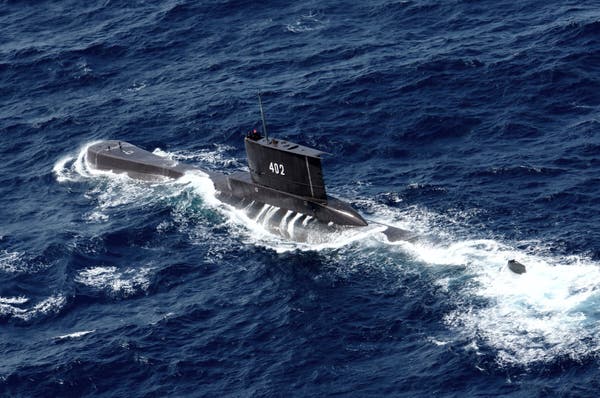By Rintan Tiffani Angela
This news feature is part of special reports on the Indonesian Submarine Goes Missing a week ago, written by three journalists of The New York Times – Hannah Beech, Muktita Suhartono and Dera Menra Sijabat.
This article is the latest in a string that documented the latest updates about the Indonesian Navy’s lost vessel, which was predicted to have 72 hours to survive with the last oxygen supply. The article’s prior version was released on 24 April 2021 and last updated on 27 April 2021.
The articles are neatly bundled up with follow-up information to keep readers informed about the situation, starting with news of the missing submarine that began to spread and ending with discovering the lost submarine.
With the emotional title “Debris From Indonesian Submarine Is Found, Ending Hopes of Rescue”, the article intrigued the audience’s desire to know more and to keep reading further. The words “Is Found” should be a hopeful indication for this context, with “Ending Hopes” adding a little suspense implying that it would turn out to be tragic. This divergent expression will make the reader concerned as to how the information would be presented.
The reporters chose to start with a lead sentence highlighting how solid the submarine army’s bond was followed by a brief interview with one retirement crew to convey how great they were and how challenging their job seemed to be. This lead sentence was meant to serve as a prelude to the devastating news that follows later.
The writers did not take the audience straight to the crucial features in the body, instead offered a brief overview of how the Nanggela vessel went missing. Even though it has already been clarified earlier in the sequels, this brief information may be helpful for readers who have just been recently updated on this episode.
The authors were also doing an exquisite way of evoking empathy in the audience. At first, the reporters provide some details about a similar case that had happened in the past, which gives readers hope. However, the fact that the Nanggala submarine was later reported to have sunk countered this information as well as the hope that vanished.
In news and feature writing, interviews and quotations are essential to allow sources to tell their stories and for readers to understand their perspective. The interview pieces in this article are well-organised. The writers skilfully merged the interview segments with the details they provided, resulting in a varied and non-monotonous narrative.Â
The interviewees came from various backgrounds related to this calamity, including the ex-vessel submarine crew, commander and family, which gave people breadth in the story since it could be a never-heard story if the article has not been published.
The writers do not use blocking techniques, instead they are using spiralling method. However, the story flows smoothly from start to end or from lead to the body ending with the conclusion. The plot unfolds naturally and clearly, leading the readers to the end step by step.
Lastly, the article’s punchline was revealed at the end of the written piece, quoting the victim’s family:
œThere is still hope, I wont stop hoping, she said. œThe men will survive. It hasnt ended yet.
Contradicting the very first words readers read in the title œEnding Hopes of Rescue, it indicates the hopes are still there and counting for those who are left. ***
(This article is written as part of individual assignment series for Feature Writing class)
